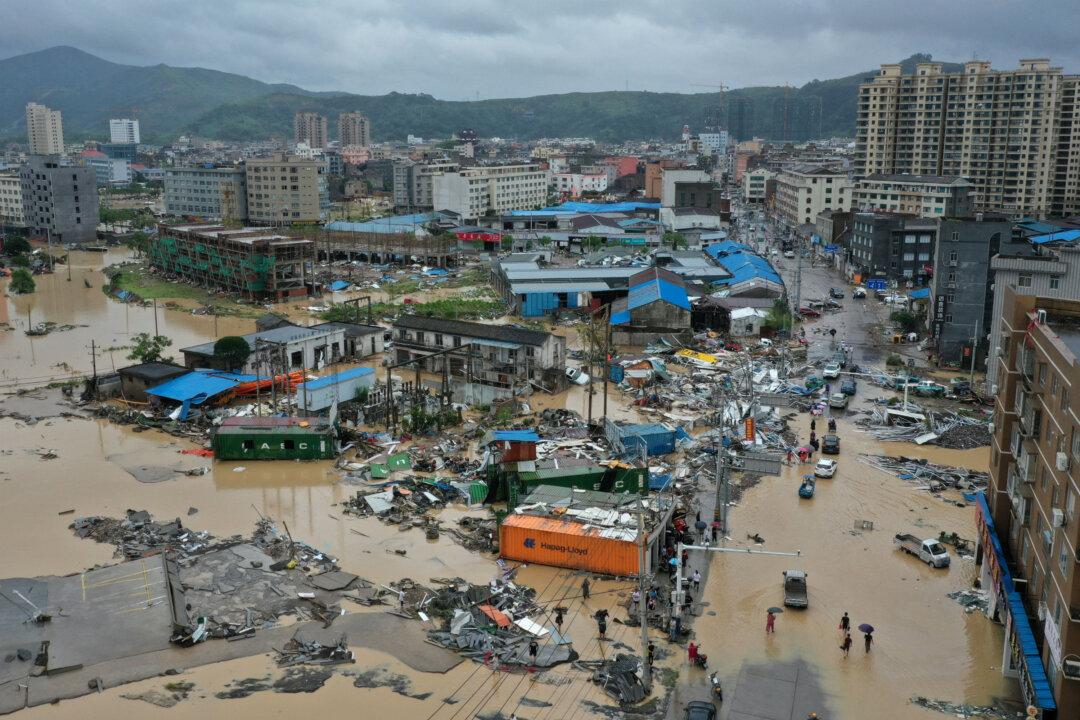The death toll from a typhoon in eastern China rose to 32 on Aug. 11, with 16 people missing, state broadcaster CCTV reported, as the country braced for more travel disruptions as the storm moved north up the coast.
Typhoon Lekima made landfall early on Aug. 10 in the eastern province of Zhejiang with winds gusting to 116 mph, causing travel chaos with thousands of flights canceled and rail operations suspended.





